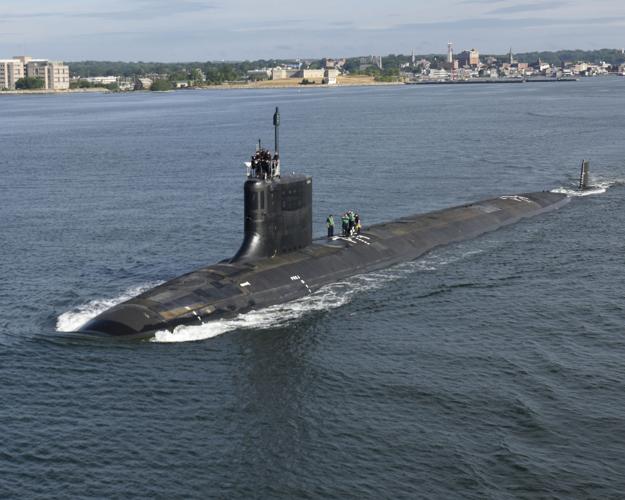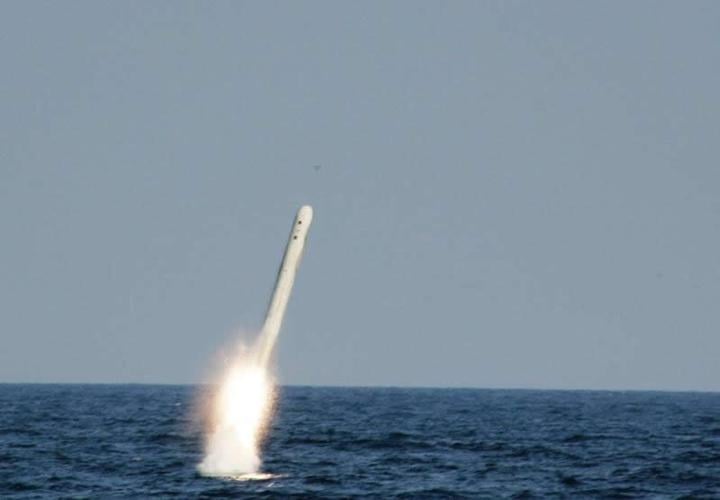Tucson-based Raytheon Missile Systems is working to pack more of its Tomahawk cruise missiles into U.S. submarines, just in time to avert a potentially large gap in the fleet’s arsenal.
Raytheon is helping General Dynamics’ Electric Boat division develop a new payload module for future Virginia-class fast-attack submarines that will triple the number of Tomahawks the subs can carry.
Made in Tucson and costing about $1.5 million per copy, the Tomahawk is the Navy’s main conventional deep-strike weapon and is fired by surface ships and submarines to destroy high-value targets with lethal precision.
The nation’s current fleet of 13 Virginia-class nuclear-powered subs features 12 individual vertical launch tubes, each with its own little door holding one Tomahawk, said David Adams, senior Tomahawk program manager for Raytheon Missile Systems.
“They’ve found that it’s expensive, it’s harder to maintain that way,” Adams said.
Electric Boat and Raytheon developed a design to replace those individual launchers with two larger launch tubes, each holding six Tomahawks and potentially larger weapons or undersea vehicles.
“This Virginia payload tube was an evolution to that — they said, ‘hey, let’s create a six-pack of Tomahawks that would fit in a larger diameter (launcher),” Adams said.
The new launcher design takes up less space, uses less material and has some operational advantages as well, he said.
The new launch tubes are going into the Virginia-class Block III submarines, four of eight of which have been delivered.
Last week, the U.S. Navy test-fired two Tomahawks for the first time from the new launch tubes on the Virginia-class fast-attack sub USS North Dakota, the first Block III submarine built.
But bigger things are planned for the future versions of the Virginia class.
For the Virginia Block V versions and beyond, Electric Boat and Raytheon are developing a new mid-hull missile module that will also add four of the larger launch tubes — each capable of carrying seven Tomahawks.
That will increase the number of launch-ready Tomahawks the subs can carry from 12 to 40 missiles.
While today, that would greatly increase the Navy’s Tomahawk launch capacity, the increase will come just in time to replace Tomahawks expected to be lost because of the planned retirement of another type of U.S. submarine.
Starting in the 2020s, the Navy plans to start retiring four large Ohio-class guided-missile submarines — the largest in the U.S. fleet — each able to fire up to 154 Tomahawk missiles.
The four Ohio-class subs — the USS Ohio, USS Michigan, USS Florida and USS Georgia — were originally nuclear-armed ballistic missile subs before being converted to conventionally armed guided-missile subs in the 2000s. (All Tomahawks are conventionally armed since the nuclear version was phased out.)
The Ohio-class submarines are scheduled to be replaced by a new ballistic-missile sub, the Columbia Class, starting around 2031. But in the meantime, the newer Virginia submarines will take up most of the slack.
“The Virginia class is helping replace that (Tomahawk capacity), with an eye toward the loss of those Ohio-class subs, and the Columbias which will be replacing those Ohios pretty much on a one-for-one basis,” Adams said.
“The Columbia class will have pretty substantial capacity of Tomahawk-capable missile tubes,” he said, adding that by the time the Ohios retire, there will be a small net decrease in Tomahawk capacity.
While work on the Virginia Tomahawk upgrades is led by Electric Boat and doesn’t represent a big contract opportunity for Raytheon, it’s important work that continues a tradition of constant technology evolution for the Tomahawk, which has been fired in combat more than 2,300 times.
“Tomahawk is a very dynamic program with evolution and development in multiple dimensions, and some are in the weapon itself and some have to do with the platforms where we’re deployed,” Adams said.
With latest Tomahawk Block IV, the Navy and Raytheon have improved the weapon’s communications and navigation capabilities, while adding a multi-mode seeker so it can hit high-value moving targets at sea.
Those upgraded Tomahawks are on track to deploy beginning in 2019 and are expected to be in the Navy arsenal beyond 2040.





